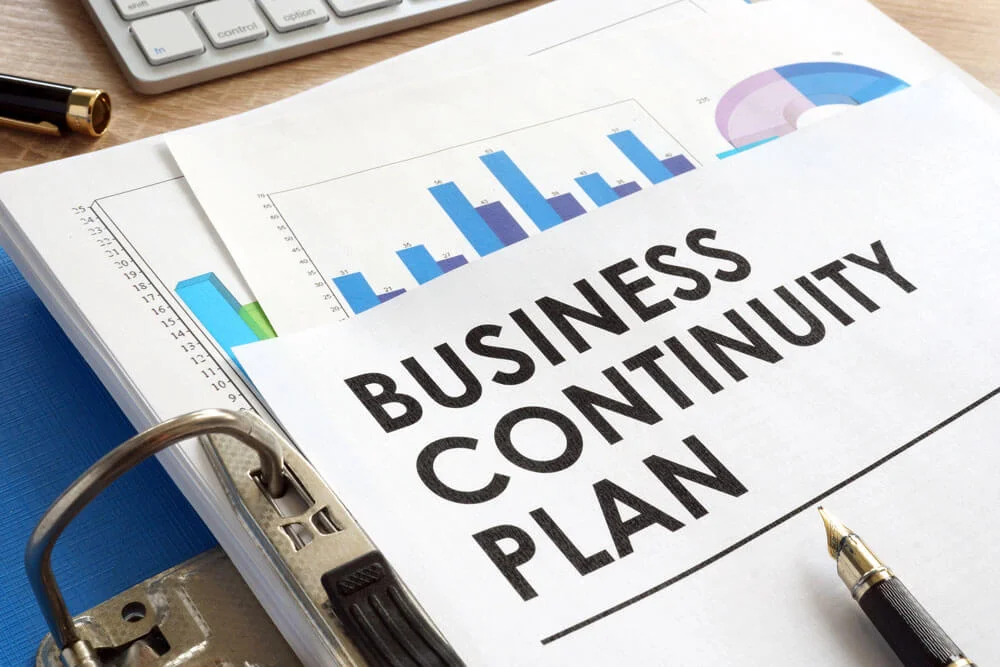Would you and your employees know what to do in the event of an emergency such as Hurricane Harvey? Aside from personal safety, you need a business continuity plan to help you navigate through potential disasters and resume business as soon as possible. Here are some steps to take that can help your business survive the next “Big One.”
If you do not yet have a business continuity plan, start developing one today. It’s going to take some time, and you want it in place as soon as possible.
IDENTIFY ESSENTIAL PERSONNEL, PROCESSES, AND SERVICES
The first step is to identify the essential business personnel and processes you would need for minimal continued operation. What must you do to keep the business running and who is qualified to keep the company going during and right after the disaster?
The next step is to determine which of your support services may be impacted and for how long.
- Assess your supply lines to see where the gaps may form in the supply chain for essentials.
- Determine the availability of your staff during an emergency and maintain current contact information for everyone.
- Maintain a list of contact information for those who are critical to your operations including your bank, attorney, and accountant.
Now that you have identified all your resources and essential processes, it is time to think about the potential risks your business could face. Some of these risks are regional. Your company may be located in a seismically active area or a coastal area prone to strong storms. If you are in the Central United States, such as in Dallas, tornadoes, high winds, and flash flooding could be your main concerns. Flooding is also a concern in cities near the coast like Houston.
Define the business impact of a widespread disaster such as Hurricane Harvey and prepare a realistic picture of how your business could survive this type of emergency.
REVIEW BUSINESS INSURANCE COVERAGE
Review your insurance.
- How much coverage do you have on your business?
- What are your deductibles and will you be able to pay them?
- What are the limits to your coverage? Flood and earthquake insurance, if available, is rarely part of a general insurance policy and must be purchased separately.
- What is your eligibility for government aid and loans for recovery?
Check with your insurance carrier to learn if you have adequate coverage for your current business, especially if you have made changes to the structure of your building or added new features.
BUILD A RESPONSE TEAM
Don’t expect someone to take charge if disaster strikes. Create a response team, sometimes called a Crisis Management Team, to take stewardship of your business and work with other emergency groups such as the police or National Guard.
Determine a chain of command for the group with definitions of each role and its responsibilities. Someone needs to be in charge to coordinate efforts and make decisions. The rest should have specific responsibilities assigned to them. Everyone should know where they are expected to go and what to do once the plan is implemented.
Regularly hold a drill to make certain everyone remembers their roles and responsibilities and that they are aware of how the plan could be activated in the case of an actual disaster.
BACK-UP YOUR DATA
A best practice for business continuity whether you face a disaster or not is to save all your contact data, documentation, and data backups in an alternate, accessible off-site location. Your IT manager or web-based service vendor should be backing up your data at regular intervals anyway. Contact the appropriate person to talk about off-site backup storage.
If your IT infrastructure is entirely in the cloud, have a conversation with your cloud vendor to have a clear understanding of the vendor’s disaster plan and how it will keep your data safe and available at all times.
In a perfect world, you would never have to worry about unplanned and extensive business interruptions but, as Mother Nature continues to remind us, weather and earthquakes happen. You cannot stop them.
You can, however, create a plan for what to do when a disaster happens, to keep your business in operation or to be able to resume operations as soon as possible. According to an insurance study, 48% of small businesses do not have a business continuity plan. Also, FEMA estimates that just under half of businesses do not reopen after a disaster. Of those that do, a quarter of them fail within a year.
Preparation is the key to all survival. Before the next Superstorm Sandy or Northridge Earthquake hits your business, put a business continuity plan in place, create a response team to implement it, and update it as your business grows. Your plan is your best bet for resuming essential business operations as soon as possible.

